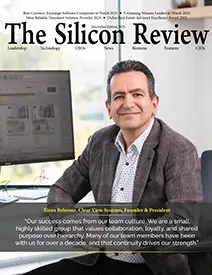>>
Industry>>
Construction>>
LS GreenLink Sparks Industrial...LS GreenLink Sparks Industrial Pivot with $680M Subsea Cable Facility
The Silicon Review
12 May, 2025
In a transformative move for U.S. infrastructure and industrial automation, LS GreenLink has broken ground on a $680 million underwater-cable manufacturing hub poised to strengthen energy resilience and supply chain autonomy.
LS GreenLink, a U.S. subsidiary of South Korea’s LS Cable & System, has commenced construction on a $680 million underwater high-voltage cable manufacturing facility in Chesapeake, Virginia—a strategic leap expected to reshape the domestic clean energy infrastructure landscape. This project marks one of the largest industrial investments in the region and signals a turning point in the race for energy independence and subsea manufacturing capabilities. The 660,000-square-foot facility will specialize in producing subsea power cables essential for offshore wind projects and interregional power transmission—components currently sourced almost exclusively from Europe or Asia. With commercial operations scheduled for 2027, the facility is set to become the first of its kind in the U.S., potentially reducing the nation’s reliance on foreign cable producers and shortening lead times for domestic energy projects.
Beyond its direct implications for renewable energy deployment, the facility underscores a broader push toward industrial automation and manufacturing self-sufficiency. LS GreenLink is expected to leverage advanced robotics, AI-driven quality control, and predictive maintenance systems to streamline production and minimize downtime. The integration of these technologies positions the facility as a model for next-gen manufacturing—merging traditional heavy industry with smart systems to optimize output and resilience.
Executives across the construction and automation sectors should take note: the project not only addresses immediate supply chain constraints but also highlights a shift in global manufacturing dynamics. As more infrastructures is re-shored and automated, businesses embedded in construction tech, logistics, and heavy machinery stand to benefit from ripple effects in demand and innovation funding. In an era defined by strategic autonomy and sustainability, LS GreenLink’s move offers a rare confluence of infrastructure modernization, economic stimulus, and technological advancement—all anchored in U.S. soil.
_2025-12-15_12-44-58.webp)


_2025-11-17_06-38-14.webp)

 (1)_2025-10-21_13-35-14.webp)
